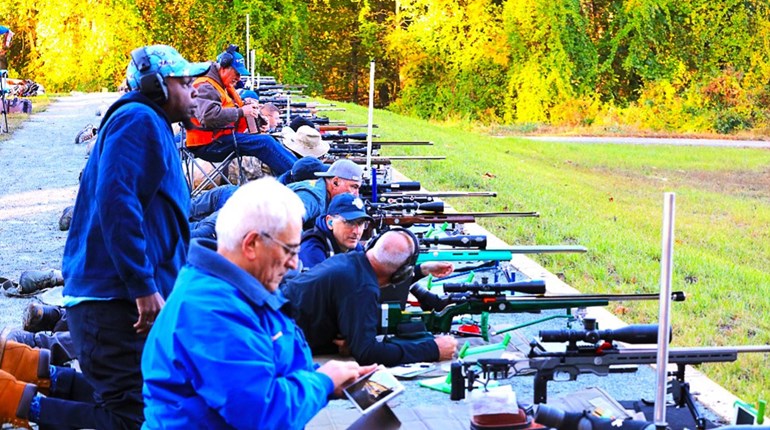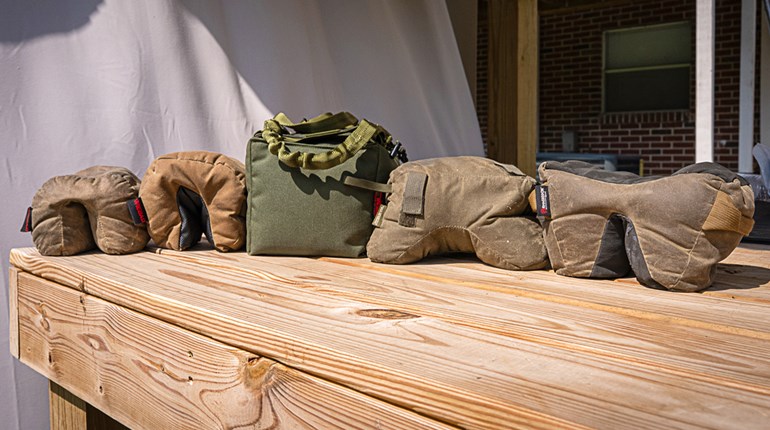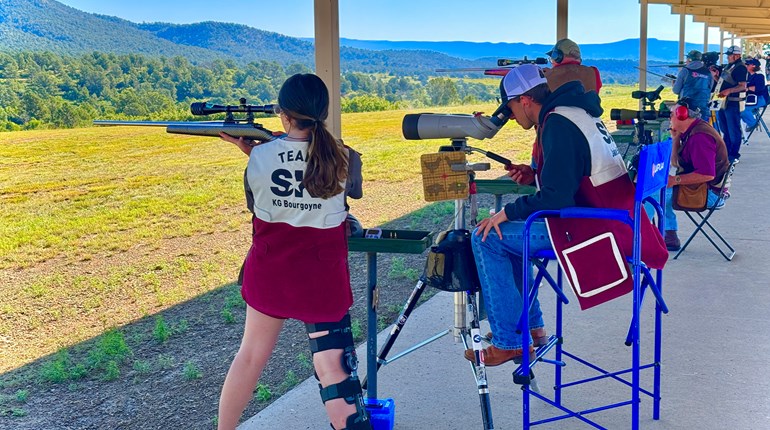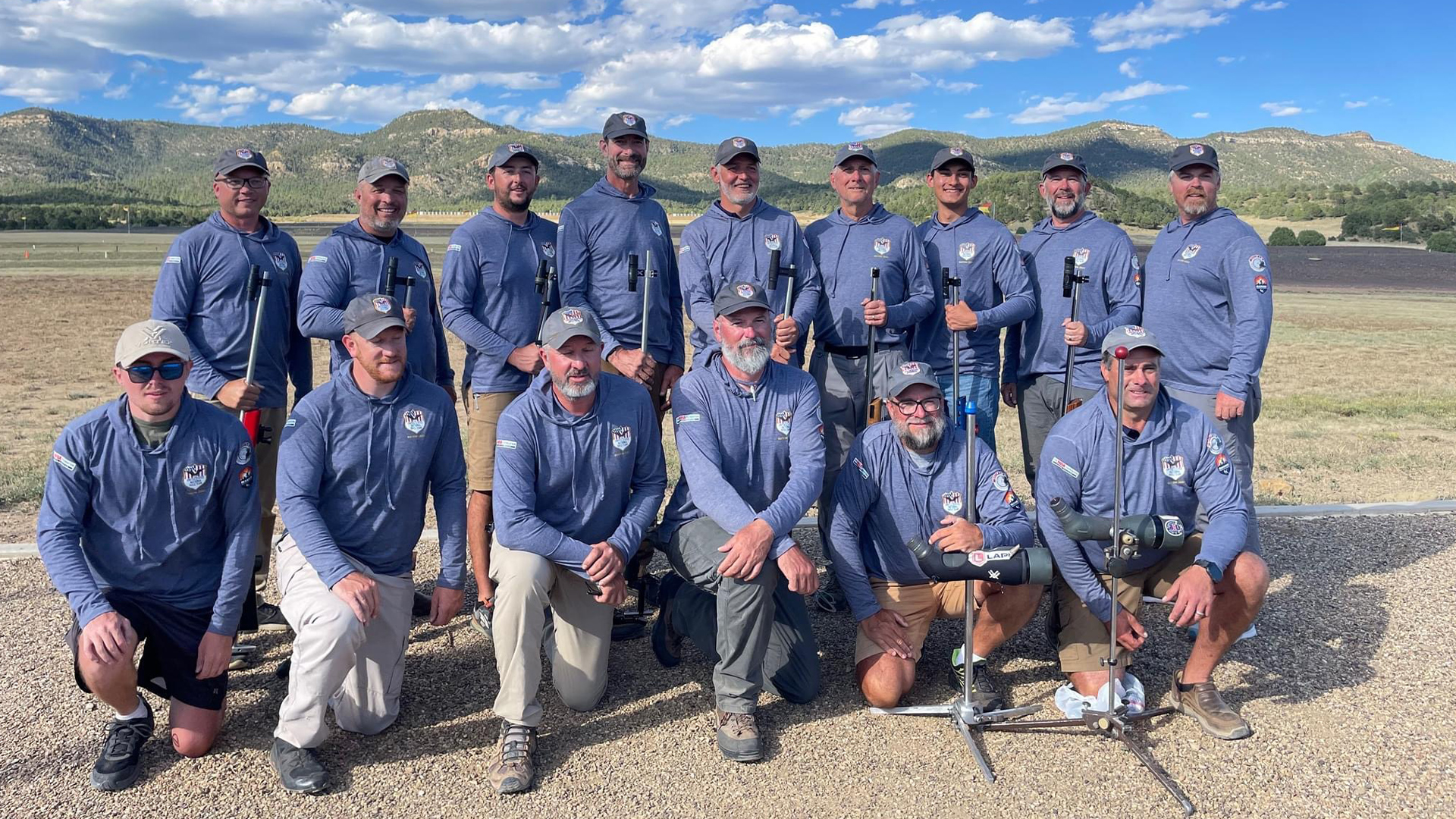
The America Match has been in existence since 2002 and began as a “intermediary” match for U.S. teams to educate themselves about international competition during the years between the Palma Match, the latter held in conjunction with the Target Rifle World Long-Range Championships. Originally, the America Match was contested solely between the U.S. and Canada, but now the tournament is open to shooters from other countries.

This year’s America Match was held for the third time at the NRA Whittington Center, located outside of Raton, New Mexico. The previous two firings of this match had been in England (2019) and Canada (2022). The U.S. has performed well over the history of the America Match, winning six of the 12 previous matches. Besides Raton, New Mexico, the competition has been fired in Connaught, Ontario, Canada, as well as at Camp Perry, Ohio, the Bisley Range in England and Bloemfontein, South Africa. Besides the U.S., England and Scotland both sent teams to compete this year.
Ray Gross was named the U.S. team captain earlier this year. A solid choice, Ray has been on several U.S. Palma teams and multiple America Match teams. Nearly 30 U.S. competitors notified United States National Rifle Team leadership of their interest in earning a spot on the 2024 U.S. America Match team roster. To determine the American team members, the 2024 Spirit of America NRA Fullbore National Championships, held the week preceding the America Match at the NRA Whittington Center, was used to build the roster.
The Spirit of America match consists of four days of individual competition alternating with three days of team matches (four-person squads). U.S., English and Scottish shooters all found their names near the top of the lists in individual competition. During the team matches, the England Crown team was consistently at the top, with every intention of preventing the U.S. from earning back to back America Match wins in 2024.
This was a different experience for me, as I first attended the Spirit of America match back in 2004 with a Great Britain team competing in the match. At that time, I was new to fullbore shooting and to shooting a .308 caliber rifle, since my background is in smallbore competition. In 2004, I didn’t even fully understand the overall process of fullbore shooting. Fast forward 20 years—with several Target Rifle World Long-Range Championships cycles and a 2019 U.S. Palma Team member under my belt—my perspective is much different.
The third Spirit of America team match competition confirmed the composition of Team USA, including Team Captain Ray Gross, Vice Captain Morgen Dietrich, Head Coach Brian Mrnak, John Friguglietti and Russel Theurer serving as line coaches and, of course, the shooters: Mike Halsey, Keith Hoverstad, Koa Van Hoven, Curt Bohlman, Verne Conant, Eric Smith, John Wilson and Oliver Milanovic, plus team alternates Justin Utley and Trey Friguglietti. Each shooter would fire two convertible sighters and 15 shots for record at 300, 600, 900 and 1,000 yards (or the metric equivalent of 300, 600, 800 and 900 meters). Each team had two targets assigned to them.
U.S. shooters knew the importance of this match. If we worked together as a team, we had a chance to win, whereas 15 individuals could not achieve that outcome. Being part of the team administration for the first time, I gained invaluable insight while developing the game plan, creating the final team lineup and discussing the pros and cons of different strategies. As a shooter, it’s easy to get in our own little bubble and not see the bigger picture; now, I had a new understanding of the how and why of decisions, along with a greater appreciation for the leadership of previous teams. Our team discussed several different scenarios on what best would mitigate our risks. Now it was time to execute the plan.
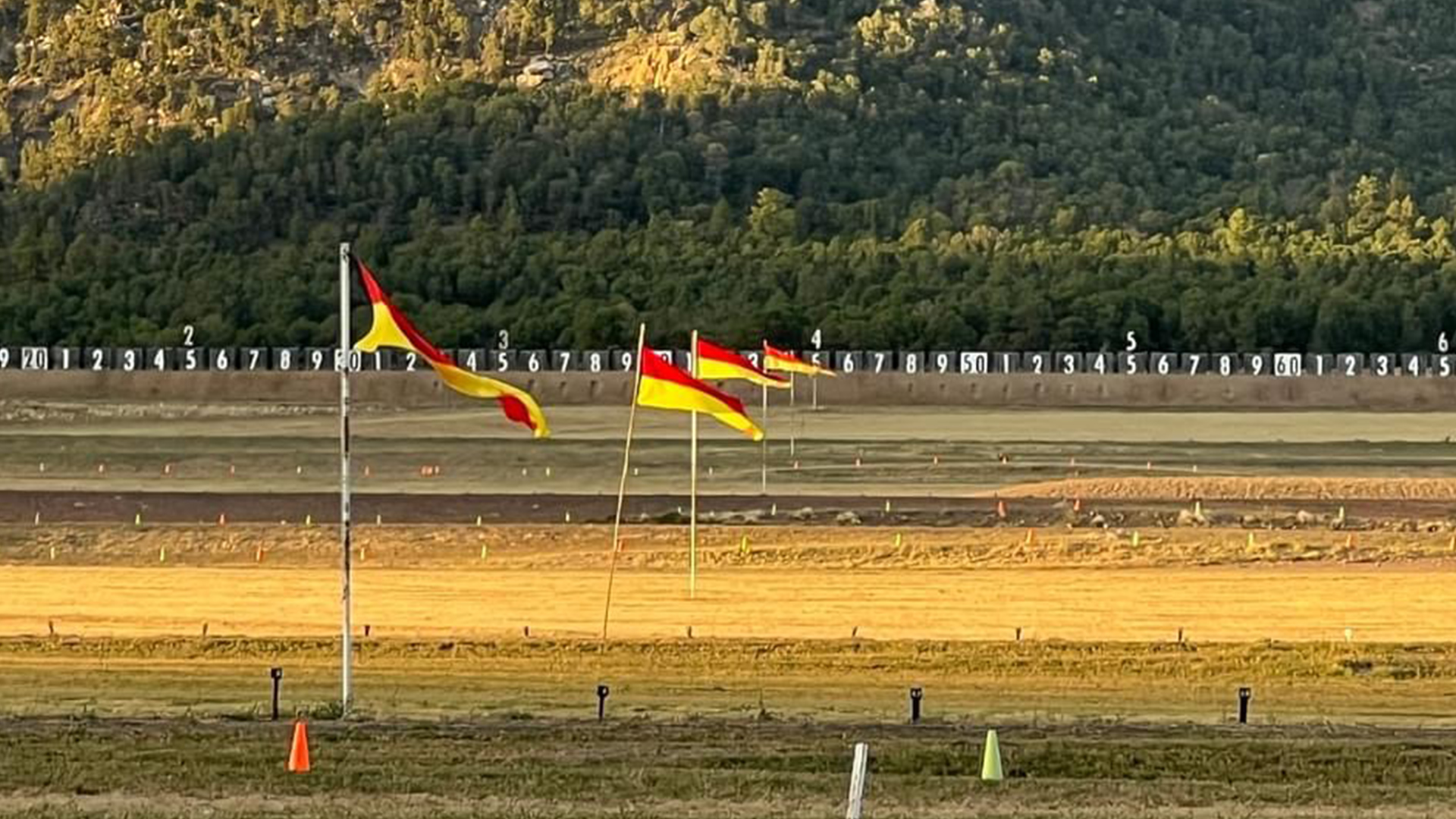
The day of the America Match was Friday, September 13, and while it started with light winds, the forecast called for very “Raton”-like conditions later in the morning. All teams were called to the line with firing points randomly drawn. Target pullers were also “blind” as to what squads they would have target duty for. Light winds at the beginning allowed our shooters to focus on shot execution with little input of slight sight adjustments from their coaches. The team was shooting 10s and Xs when we had an internal team crossfire. Despite this setback, our team did not quit. We did not yell at our shooter, nor did we have a big spectacle; rather, we stayed focused and simply buckled down. All the other shooters did their jobs, and we shot a pair of nines at the 300-yard line. Historically, U.S. teams struggle at the 300-yard line but have been improving in recent years. Leaving the initial yard line, Team England was down three, Scotland down six and the U.S. down 12. Our coaches prepared for the future wind we expected and continued to “do the work” we all needed to get back those points.
Being in the headsets of our coaching crew all day was exhilarating. There was no talk of the past, only what was it going to take to put shots into the 10- and X-rings. We got right to it with the coaches making excellent wind calls: “one and two right” (meaning one minute and 1/2 minute right) to “zero and three left” (meaning 3/4 minute left). Coaches informed other coaches the value of windage adjustment on the sights for each shot going down range. This, in conjunction with the display of the actual shot value (score) on the marked target, assisted the team coaches with guiding the next shot into the X-ring on our opposite target. We also had coaches watching the trace of the tiny 155-grain, .30-caliber bullet going into the target, relaying where the trace went into the target face, if possible. This saved valuable time in knowing whether the shot hit the target center. Again, the U.S. team worked as a unit.
Short pauses in the team rhythm occurred if there was an off call shot, a quick direction change in the flags or a reversal. Anyone on the squad could call out something they saw as a change—Ray was watching large incoming changes from behind us, while Trey focused on a key area of flags, which allowed the line coaches, John and Russ, to focus on their shooters and do the best they could to center the groups. Brian watched the shots going in (the bullet traces) and kept track of the overall shot plan. There was no hangover from 300 yards, instead the team was working together well. Communications discipline was key, information was shared only if it was needed, so that decisions were made concisely and quickly. This approach worked, as the shooters were delivering deep shots (10s and Xs), the team score was continually improving. The U.S. team only lost five points over those 120 shots at 600 yards. We led the teams on that yard line and reduced our deficit to seven points, while England dropped seven and Scotland 20.
After 600 yards was lunch. This played to the U.S. advantage as well, since we needed difficult conditions to pull off a win. During lunch, the wind continued to build. Team spirit was good and the focus was on how we would win the final two yard lines. We asked ourselves what tweaks could be made to our tactics and how do we keep improving?
At 900 yards, the wind was both stronger (increased velocity) and showed a lot of “attitude” by quickly changing directions. Just as the coaches would put a number on a condition it would change, velocity and/or direction. We would hold a shooter up, and just as we are ready to get them to fire again the condition would leave. It’s easy to become frustrated and deviate from the game plan. For Team USA, 900 yards was a team effort. We had several shooters that laid in the heat for a long time as the conditions changed quickly. It would be easy to bleed points for the sake of getting a firer off the line, but our shooters performed great, despite the conditions. Our early shooters dropped more points, but those points helped us learn what we could believe. Mirage reversals, flags on certain parts of the range laying flat and the dust from the bullets impacting into the berm changed throughout the string. If those shooters did not deliver quality shots, our learning would have been flawed, but later our coaches found their groove and our last two firers shot a 149 and a 150. For the conditions, these were epic scores. We could all feel the tide changing as a bad wind call for us would be a nine, while our competitors had more eights. The U.S. owned 900 yards, dropping 30 points when England lost 47 and Scotland 72. It was all going to come down to the final stage.
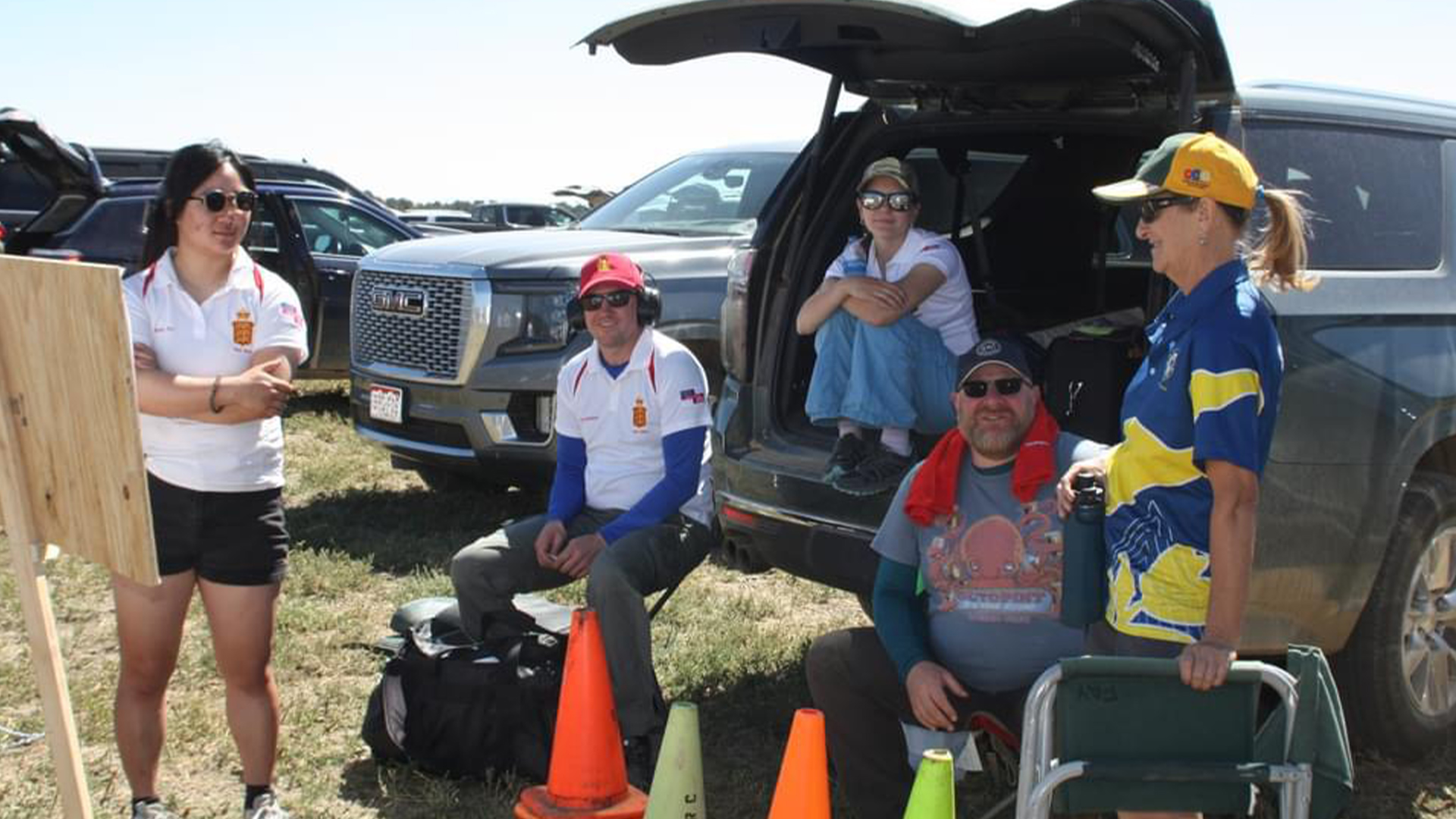
For the 1,000-yard line portion of the match, our team was ready. The conditions continued to erode, but the scores our that our shooters posted gave us confidence with continuing our strategy. Specifically, keep out of the big conditions, nines are not great, but eights and sevens were to be avoided. Our focus was point (score) preservation, so when a condition we could read arrived, we had to get as many 10s as possible in short order. This is where the experience of being a part of team management, as opposed to being a shooter, was different for me. As a shooter, I have been blind to the strategy, the why of being held up when my position was deteriorating. As a shooter my thoughts were, “Why couldn’t the coaches put a number on the (windage) value so I could shoot?” It’s just not that easy. The coaches are not only working to obtain 10s and Xs, but they are also working to eliminate eights and sevens. Those two concepts do not always work together. The U.S. team stopped at the correct time, avoided the big conditions and worked hard to maximize our score when we could.
The 1,000-yard stage started with deep shots, as we were calibrating the changes to the sights. No more “one and three,” at this point we were “two or three and …,” and sometimes both sides of zero for the windage adjustments. For strategy, we were trying to work only one side of zero unless forced to go to another condition. England was not laying down, their targets were going up and down with pauses to reduce eights, but we all had some. Their cadence was faster than ours in more consistent winds. We started with a 148 on one side and 143 on the other, again learning for the future shooters. It was hot and shooters were tasked with pausing, taking a break and unable to get into a real rhythm. That makes delivering an X so much more difficult, but there was no complaining. Everyone did their part—the plotter would notify the coach when a shooter’s group could benefit from a tweak by moving an elevation zero a quarter minute, and a back coach would call out a flag angle change or a wind pickup from a new direction. Our team was “locked in,” as my teen daughter would say. It was fun to feel the energy, hear the steadiness of the whole team over the headset and feel each shot get us closer to our goal.
However, the English team had found their groove. They only had a few shooters left to go, while we had many more. Our lead was up for debate, and we did not know what the score was until England fired their last shot. At that point we had one shooter left. From all the calculations, we believed we needed an eight or better to secure the win, but we were not 100% sure of that number. We had one shot to go but the wind was being extremely chaotic. Our shooter laid there for over 20 minutes after his previous shot, and he even got up and walked a round for a bit to stay loose. We thought our condition was coming back three different times where we would start to get him prepared for the final shot, only for the wind direction and velocity to change outside of our desired range. Finally, we had a consistent condition, it was above the bracket we wanted, but there was no guarantee that the wind we wanted was ever coming back. With “three and one left” put on the rifle, we needed this one to be deep. The shot went away, trace looked in the middle but until the target came up, we were not positive. Finally, the the target showed us our 10, and we knew that our team won.
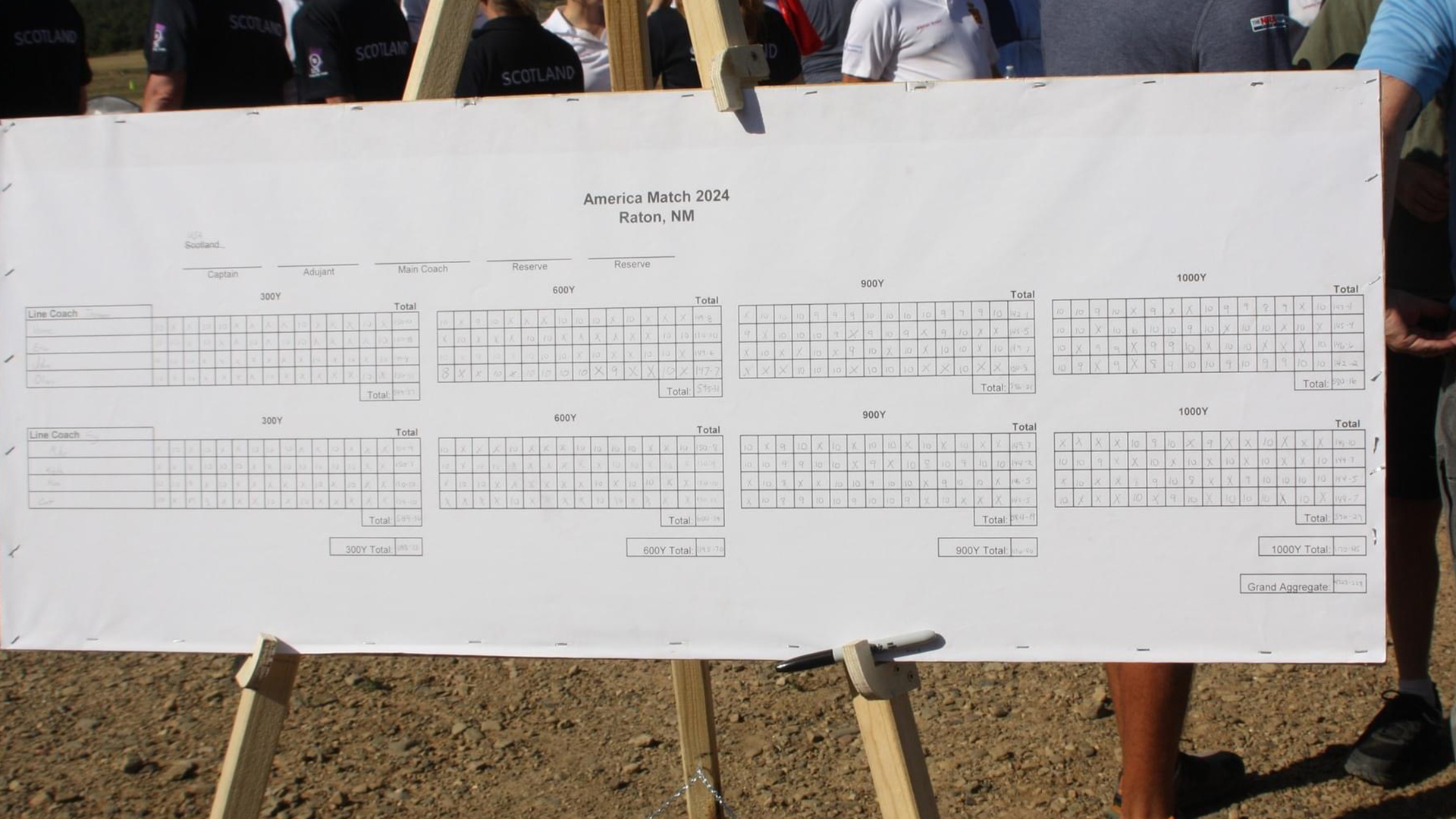
I can only describe the experience as a mixture of joy, relief, proudness, camaraderie and sheer happiness. It was one of the best feelings I ever experienced on a rifle range—more impactful than my individual wins. This team did not quit and we delivered. Steady, calm leadership and determination by everyone on the team got us over the line. England posted a solid score at 1,000 yards, they owned that yard line, but we did enough to keep the lead we had gained at 900 yards.
Hugs, cheers, smiles and many pictures followed. All teams at the 2024 America Match exhibited superb sportsmanship. Everyone was watching as that final shot was delivered and everyone was on edge. This match also will enable three members of our team earn their NRA International Fullbore Distinguished badges: Eric Smith, Russel Theurer and myself (Morgen Dietrich). These badges are hard to come by, as points can only be earned in World Long-Range Team Championships such as the Palma Team match, Individual World Long-Range Championships and International team matches like this one.
This match will be an “all timer” for those there witnessed it. I am blessed to have been a part of the action. These types of competitions are the reason why “team” shooting needs even more focus in the United States. Winning with peers, along with learning, overcoming and developing relationships is much more fulfilling than individual competition. Team shooting is what the U.S. National Rifle Team is working hard to improve on each year.
2024 America Match Leaderboard
- United States, 4719.227
- England, 4717.219
- Scotland, 4653.178
You can see the full results of the 2024 America Match here.
Finally, a big thank you to our sponsors and organizers for this event, including The NRA Foundation, Mudcat’s Precision Machine, Manson Precision Reamers, the United States National Rifle Team and the Bald Eagles Rifle Club. Additionally, we would like to thank the companies who have been longtime supporters of our sport: Berger Bullets, Sierra, VihtaVuori, Lapua, Starline Brass, Brux Barrels, Bartlein Barrels, Krieger Barrels, Creedmoor Sports, Kowa Optics and Swarvoski Optik (scopes, spotters, binoculars and rangefinders), Leofoto and DB Machine (ladder front sights).
Learn more about the U.S. National Rifle Team at usnrt.com.














